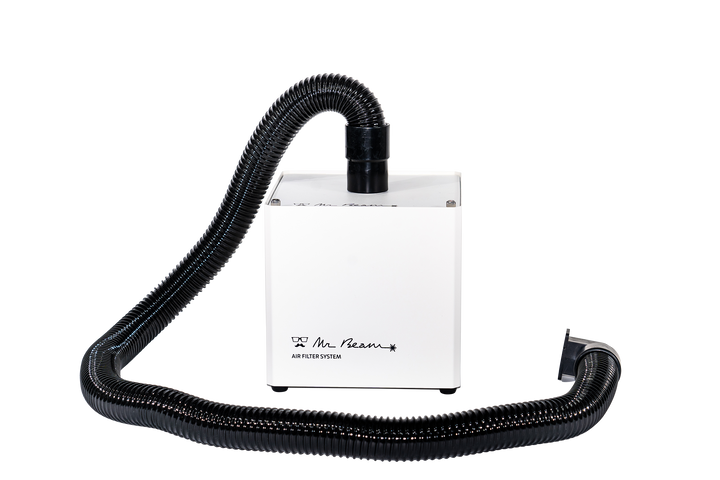Balsa wood is a light wood that has a small density and can be easily edited. Thanks to these properties, it is very popular in the field of model building. But the applications are diverse. Read here: What is Balsa wood exactly, what properties does it have, where does the wood come from, and how is it produced? You also learn what Balsa wood can be used for and what it costs.
What is Balsa wood?
That versatile balsa wood is the lightest trade worldwide. The weight is lower than at cork. It comes from the ochroma pyramidale. The very fast-growing and evergreen deciduous tree, which belongs to the Malven family, has a large deciduous crown. It reaches a diameter of around 70 centimeters in six to ten years. After the second year it grew about five meters high, around 25 meters after about five years and can then be beaten due to the quick growth. Older trees can be 50 meters high.
Where does Balsa wood come from?

The balsa tree prefers deeper coastal areas. It occurs in the tropics of Central and South America, as well as in:
- South East Asia
- Africa
- Indonesia
Ecuador is the main extension area And covers almost complete need for the wood worldwide. It mostly comes from the forests or from the plantations of this region. The tropical wood must therefore be imported. It is all the more important when buying on that FSC seal To ensure that you ensure sustainable forestry. The tree grows all year round. Due to the increasing popularity, the spread of wood is great.
How is balsa wood made?
The wood is imported from plantations in the Andes of Ecuador. Here the trees are planted in rows, After about six years and then processed into Balsa wood. Either it is exported in the form of tribes or sawn in boards or cantula. The desired area of application plays a role in processing. For example, angular boards are used as cutting wood. So it can also be planed and sanded into different shapes.
What does Balsa wood cost?
The wood can be found in the middle price segment and more expensive compared to oak. However, it should be borne in mind that the quantities when using are mostly lower. Lumber an average costs around 1,800 euros per cubic meter. It is available in different strengths. The profiles can be rectangular and square.
What are the properties of balsa wood?
The properties of the balsa wood are different depending on the cut. This enables versatile use in several areas.
Balsa wood is a lightweight with a very low density Among the many types of wood and can be easily edited. For example, the weight is a third less than with spruce wood. Nevertheless, it convinces with ideal strength and stability properties. The insulation capacity against heat, sound and vibrations is also good.
The wood has a bright color, which is to be described as light yellow to almost white. Sometimes it can be light brown or slightly pink colored, although the tree is mostly older. The annual rings are not pronounced, but which are usually clearly recognizable. The grain is even and barely noticeable.
The disadvantage of Balsa is the susceptibility to infestation of insects and mushrooms, such as bluish mushrooms. However, this is especially true when it Freshly beat or moistened is. In addition, the wood is not weatherproof.
What can balsa wood be used for?
If you are looking for a wood that is for Handicrafts suitable, are you well advised. Thanks to the low density, it is light and soft.
It was already used in South America in the 16th century, preferred in shipbuilding. The name results from the use of raft construction, because rafts were built in Central and South America. Balsa means raft in Spanish. The first surf boards were made from this wood in Hawaii.

The easy processing, the low weight as well as the considerable elasticity and stability make it ideal for model building. In this area, the material is extremely valued today, especially for aircraft and ship models. In the aircraft model building, for example, wings, ramps and conductors are built. Lighter wood is lighter than darker.
The pore content is high, so that is Wood also suitable in the areas of insulation as well as sound and heat protection. In the area of refrigeration technology, the insulating effect is advantageous. The pulp content is just as high. Therefore, paper is also made with the wood. In general, it can be said that it is used for many purposes due to the properties.
Which glue is best suited for Balsa wood?

Soft wood can not be planed or filed. Nails and screws keep it as bad. Therefore you should Glue or glue. There are different possibilities:
Model builders use second glue. They are accurately described as cyanoacrylate adhesives, which penetrate deep into the wood and harden quickly. However, the bonds are brittle, so they can come loose on elastic materials. Nevertheless, superglue is indispensable in the model-making workshop, for example.
Also comes into question Wood glue, which is also called white glue. This is a formaldehyde -free dispersion mucus without a harmful solvent. This glue is only suitable for gluing materials that can absorb water. It takes a while for it to harden. But the adhesions are stable. It is also suitable for model making.
Hard glue convinces with the quick drying. He penetrates little into the wood. The glue is hard.
What options are there to cut balsa wood?

Due to the honeycomb -like structure of the cells, Balsa is cut perpendicular to the fibre direction. That soft wood Can be easily cut and partly bending. But you cannot plan or file it, but only edit it with a sharp knife. It is very well suited Mr Beam Laser cutter. With that you can do that Cut the balsa wood wonderfully And engraving for personalization. The processing of the wood is particularly gentle and precise with the laser cutter. It is considered ideal for cutting, for example the parts in model and aircraft construction. It is important that the wood is dry during processing, otherwise the cut edges could change color.
Advantages and disadvantages of balsa wood at a glance
Advantages
Balsa wood offers a variety of advantages that make it an attractive choice for many applications. One of the biggest advantages is its light weight and good stiffness-to-weight ratio, making it ideal for applications such as model making, aircraft ship building or even architectural models. It is also easy to machine and shape, making it perfect for making complex shapes and objects.
Balsa wood also has excellent thermal and sound insulation properties, making it ideal for insulating buildings. Environmentally conscious consumers will be pleased to know that balsa wood is a natural and sustainable choice, as it grows quickly and can be sourced from sustainably managed forests. Balsa wood also has excellent weather resistance, meaning it can be used outdoors.
However, it is important to note that balsa wood also has disadvantages, and the advantages and disadvantages should be carefully weighed before deciding to use balsa wood in a particular project.
Disadvantages
Balsa wood unfortunately also has some disadvantages that should be considered when choosing the right material. One of the biggest disadvantages is its lower durability compared to other types of wood, which makes it more susceptible to damage from moisture and fungus. It is also not as robust and hard as some other types of wood, making it less suitable for applications where it will be subjected to high loads.
Balsa also tends to have less strength than other types of wood, making it less suitable for applications that require high strength. Balsa is also not resistant to insect and fungal attack, making it necessary to treat or protect it preventatively. There are also environmental concerns about the sustainable management of the forests from which balsa wood is sourced. Tips on wood care can be found here.
Conclusion on the balsa wood
Thanks to the specific properties, Balsa wood is a versatile building material. It was used for raft construction earlier. Came over time many other areas of application, for example the construction of surfboards. Nowadays, thanks to the extreme lightness and low density, the wood is a popular building material in model building. It is also used as insulating and insulation material as well as in the area of wind power. The optimal processing way is cutting. If you plan and file the wood, it can break. A laser cutter is very suitable for precise cuts. The wood grows into the tropics and must therefore be imported. Seals of approval, such as FSC, support an ecological forestry.
You have our Material guide to the Balsa wood favour? Then you will definitely find our articles too cork, Mu or concrete. We also have a very detailed one Plywood guide in our Mr Beam Blog.




